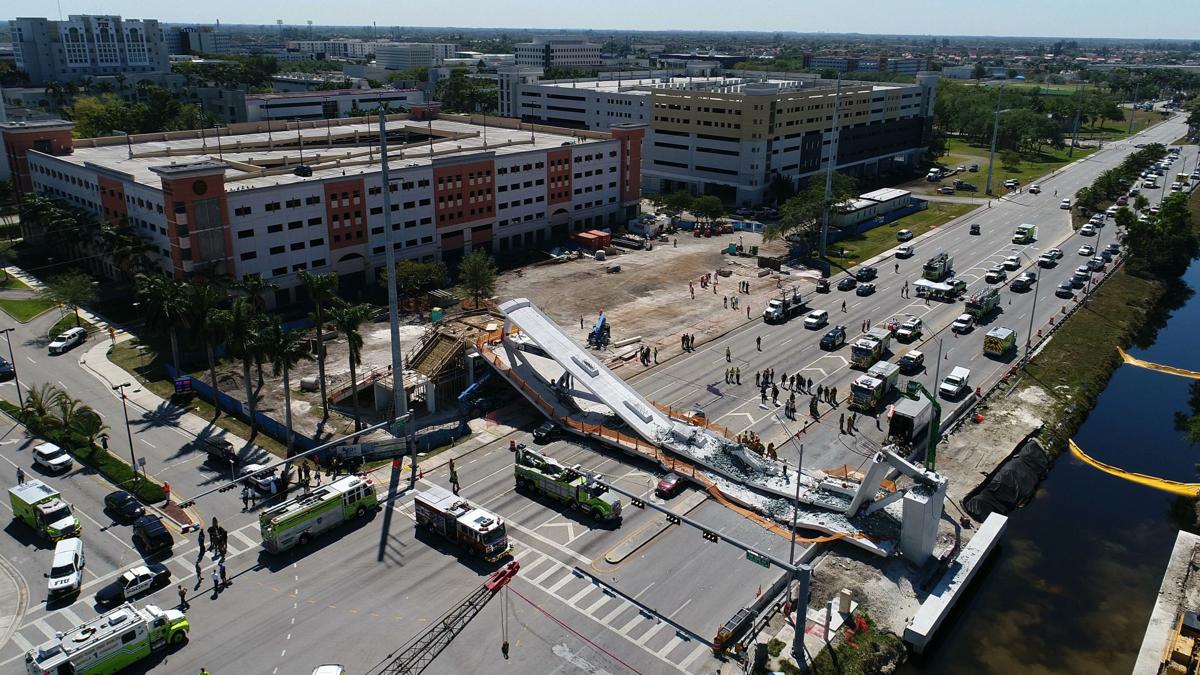Asset Protection: How the Florida International University Bridge Collapse is Relevant to You

On Thursday, March 15, 2018, a newly installed bridge collapsed on Florida International University’s (FIU) campus killing six people and injuring nine others. The new pedestrian bridge was designed to connect the campus to student housing while showcase the school’s leadership in the Accelerated Bridge Construction (“ABC”) method of rapid bridge construction. The construction of the bridge began in March 2016 and was scheduled to be completed in December 2018.
Five days before the collapse of the bridge, it was lifted into place. According to FIU, the bridge was meant to last 100 years. The relevant parties to the construction of the bridge include:
- FIU which commissioned the project and its design build team was responsible for overseeing the project.
- FIGG Bridge Engineers was responsible for the design of the bridge.
- Munilla Construction Management is a family owned business that was in charge of construction of the bridge.
- Louis Berger an engineering firm hired by FIGG Bridge Engineers to conduct an independent design check.
- Bolton Perez & Associates, the project’s consulting engineer.
On March 13, the project’s lead engineer discovered cracks in the bridge. He reported this by voicemail to a Florida Department of Transportation (FDOT) employee. He thought this was not an immediate safety issue, merely something that would need to be repaired later. At 9 a.m. on March 15, the design-build team met for about two hours at the construction site to discuss the cracks discovered on March 13. Representatives from both FIU and the FDOT were present. The lead engineer of FIGG Bridge Engineers concluded that the structural integrity of the bridge was not compromised and that there were no safety concerns raised by the presence of the crack. The bridge collapsed shortly thereafter.
Since the bridge collapse, it was discovered that Louis Berger was not pre-qualified by the Florida Department of Transportation to do engineering work. Additionally, Munilla Construction Management and FIGG Bridge Engineers have had a history of violations in Florida and Virginia.
Injured victims and the families of the deceased have filed suits against companies involved in the design, construction and oversight of the bridge “who undertook and allowed inherently dangerous construction activities to proceed without necessary safety precautions.” Additionally, the claims against the companies indicated that they failed to recognize the “imminent danger” posed by the cracks spotted on the bridge, and that traffic should have been diverted from under the bridge while workers conducted stress testing, or post-tensioning, on the north end of the span.
Issues of Possible Liability:
- FIU hired FIGG Bridge Engineers and Munilla Construction Management as a “unified design-build team”. Since both companies had a history of safety violations, did the university perform its due diligence in its hiring?
- FIU’s agreement with the state of Florida required that all contractors and subcontractors be pre-qualified by the Florida Department of Transportation. Louis Berger’s lack of pre-qualification puts FIU in jeopardy.
- FIGG Bridge Engineers is the general contractor and hired Louis Berger. The lack of pre-qualification also puts FIGG Bridge Engineers in the crosshairs.
- Bolton Perez Associates was the consultant on the project, did it act negligently in its consultation?
- Did FIU and FDOT act negligently in not diverting traffic when they were notified of the cracks on March 13th and later investigated them on the 15th?
Application for our clients.
- FIGG Bridge Engineers and Munilla Construction Management were hired as a “unified design-build team”. If a client teamed up with a third party in a construction project and the partner was liquidated, our client would be left with all the liability.
- FIGG Bridge Engineers hired a subcontractor that was supposed to be pre-qualified and perform the independent review. General contractors are often put in similar peril for their subcontractors. It is important that the general contractor ensures that the subcontractor has all the licensing requirement needed to work on a project.
- A proper entity reorganization could protect a client’s personal assets from liabilities that may arise in the future. It will be too late for FIGG Bridge Engineers and Munilla Construction Management to reorganize now and shield their business assets from liabilities that arise from the bridge collapse.

